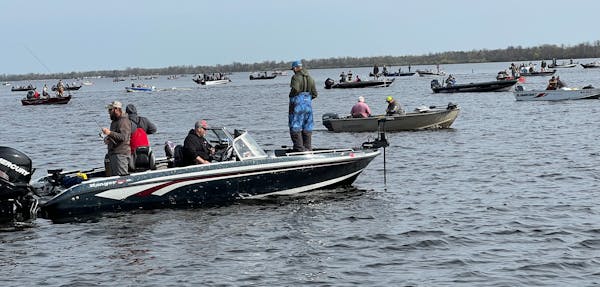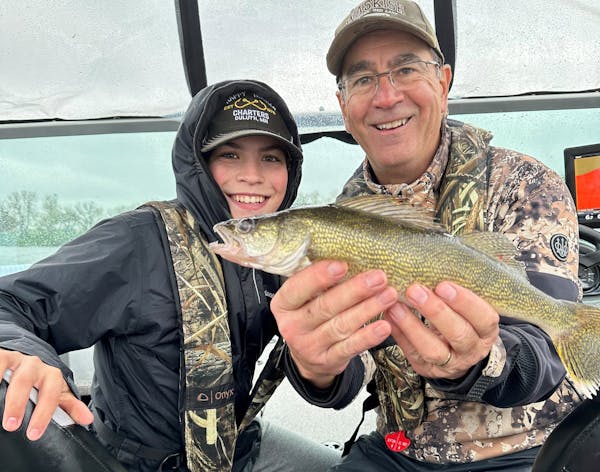A new playbook for building mountain biking trails in Minnesota arrives at a time when the sport is riding a peak of interest from Lake County to Lino Lakes.
The guide, which is being officially introduced Monday, represents four years of work by the Greater Minnesota Regional Parks and Trails Commission, a governor-appointed panel representing six park districts across the state.
"I think this is a massive step forward in terms of legitimizing mountain biking as a prime outlet in Minnesota," said Gary Sjoquist, who has consulted on work in popular trail systems, including Cuyuna Country State Recreation Area in the Crosby-Ironton, Minn., area. Sjoquist also has deep connections to the scene and its communities, through his Minnesota Mountain Bike Series of races.
The parks and trails commission crafted the guide by tapping voices of authority on the mountain biking scene in Minnesota and nationally. The International Mountain Bicycling Association;Rock Solid Trail Contracting, professional trail builders in Michigan and Arkansas whose résumé includes expansions at Cuyuna Country; and parks and land planners in Duluth and Lake County are among the contributors.
Commission Executive Director Renee Mattson said the need for guidelines became apparent as the commission received more requests and inquiries about building mountain biking trails. The time needed to produce something comprehensive also grew.
The 242-page guide details foundational areas for land managers and other trail-minded stakeholders to consider. For starters, can the land accommodate a trail? The book follows up on best practices, including for hiring contractors and building trails that are environmentally and economically sustainable.
"I think we have provided a really good resource to help people through the process. To think about what all needs to take place," Mattson said. Funding from the Minnesota Clean Water, Land and Legacy Amendment helped pay for the guidebook, which will be available online and distributed.
Minnesota Off-Road Cyclists is among several state groups built on volunteers who ride but also put hours into growing the sport by doing the dirty work — shaping and returning again and again to maintain trail systems. More than 120 members work on 17 trails, including the singletrack in the Rice Creek Chain of Lakes system that opened in 2022 between Lino Lakes and Centerville.
Gunnar Carlson, the group's president, applauds the sweat equity and knowledge that volunteers in Minnesota invest. But he said that work is inherently limited and can produce uneven riding experiences. Carlson welcomed the new "unifying document" emphasizing professional work and said he thinks it will make trails that are safer and more reliable as the sport increases in popularity.
"I am a huge fan of a master plan," he said. "When you can create that kind of organization and guidelines … that is a really good thing."
Mattson said there is a vast difference in what Minnesota's mountain bike trails used to look like as the sport took hold in the late 1980s and '90s and their current level, which continues to improve for riders of all levels.
It's part of the commission's job to take a close, data-driven look at what parks and trails are used and how — and where there are opportunities. That's where mountain bike trails fit now, and Mattson said the economic benefit to communities is unmistakable. She pointed to a swath across central and northern Minnesota: Detroit Mountain in Detroit Lakes, Cuyuna Country, Tioga in Cohasset, Redhead Mountain Bike Park in Chisholm, the Duluth Traverse system, and Split Rock Wilds in Lake County.
"That is a giant wealth of trails in one area," Mattson said. "If we all see the benefit of working together and promoting this system, there is an economic benefit that is impactful."
Cuyuna Country, which continues to expand, has been considered a blueprint for other communities. Nearly 120,000 people rode in the system in 2021 alone, pumping millions of dollars into local economies.
Like Carlson, Aaron Hautala said the guidebook represents a new level of attention to mountain biking and its relevance beyond sport.
"As we see across the country and world, bicycle tourism is a powerful and growing economy," said the former president of Cuyuna Lakes Mountain Bike Crew, "and it's good to know we as a state are working in an aligned fashion to make good on this economic and health and wellness opportunity together."
Mattson said the target audience isn't only Cuyuna-sized. The intent is to level the playing field, to encourage communities looking to build, say, 2 miles of a trail behind a high school, too.
"[The guidebook] is helpful for smaller communities that aren't looking to do something world-class but just want to give their community a good experience … to learn close to home and then venture out and gain more skills. It is that resource that is really important," she said.
Sjoquist, the consultant and race organizer, said that as much as the book emphasizes the upside of methodical trail development, he was impressed that it acknowledges pitfalls and the importance of engaging community members.
"The spectrum is tilting toward professionally built trails that are sustainable long term," he said. "This book is a verification of what has been learned and how to make mountain biking work far into the future."


